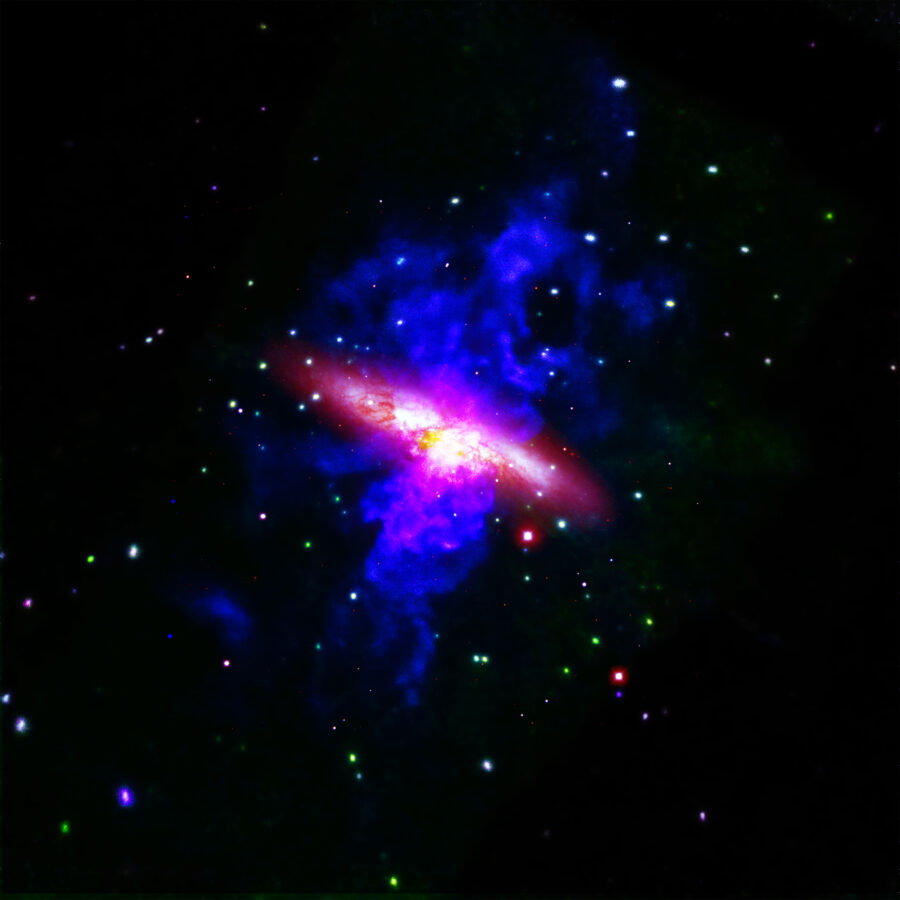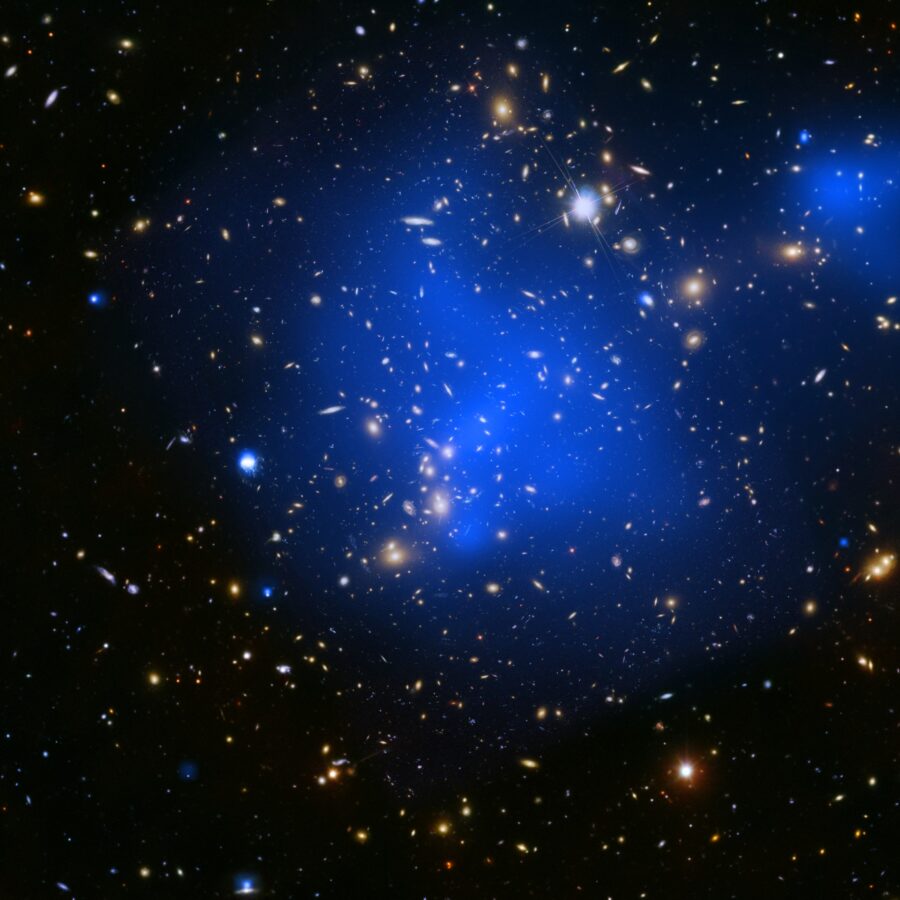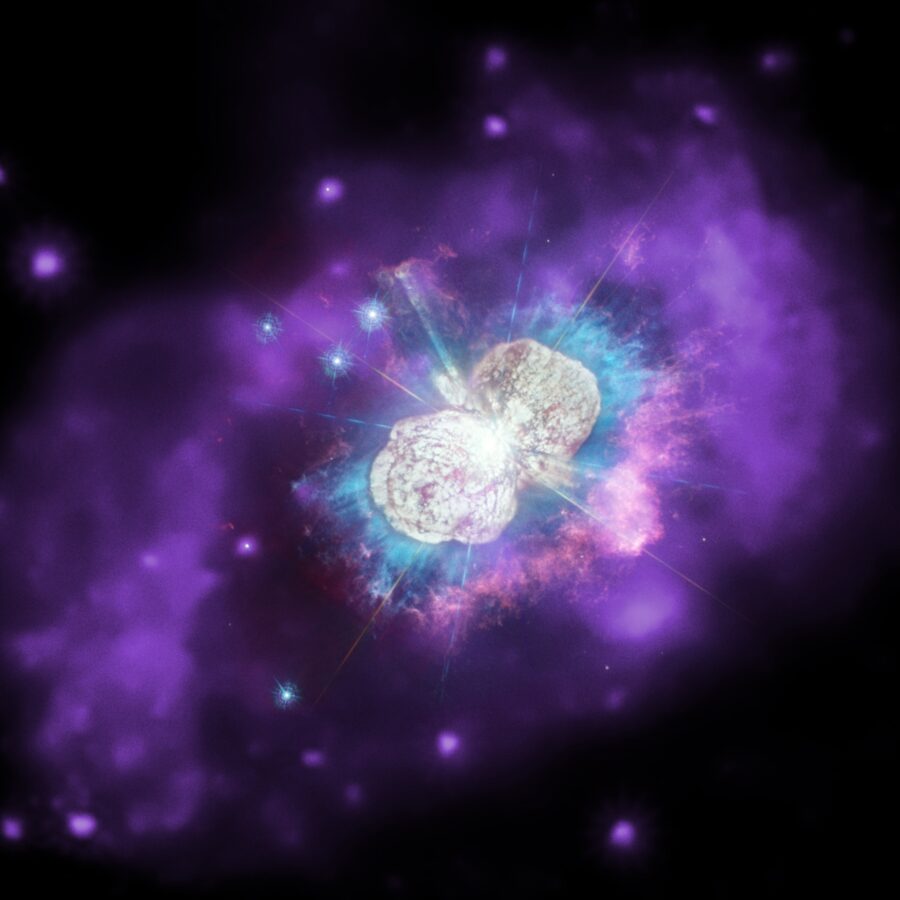The Universe Is More Beautiful Than Ever In New NASA Images
New images showcase the true beauty of the universe.
This article is more than 2 years old

The universe is a truly wondrous and beautiful place. We are constantly reminded of its grandeur whenever science organizations are able to photograph interstellar phenomena and constructs. Thankfully, NASA has just released a brand new batch of images from the Chandra X-Ray Observatory that reaffirm the gorgeousness of our universe.
Here are all the new images of the universe released by NASA. We have also included their official labels and descriptions that were provided by NASA.
M82 Galaxy

Messier 82, more commonly known as M82, is a galaxy in our universe that is oriented edge-on to Earth. Thanks to this orientation, astronomers are given a unique perspective of this galaxy, including moments when bursts of star formation occur in M82.
X-rays from Chandra (which show up as pink and blue in this picture) show gas outflows that reach as far as 20,000 light years long. These outflows are as hot as ten million degrees due to multiple supernova explosions.
Abell 2744 Galaxy Cluster

According to NASA, “galaxy clusters are the largest objects in the universe held together by gravity.” We can see the Abell 2744 galaxy cluster here, which combines X-rays from Chandra and optical light data from the Hubble telescope.
These galaxy clusters contain large amounts of superheated gas, bringing temperatures to upwards of tens of millions of degrees. You can see those temperatures represented by the glowing blue spot in the picture.
Supernova 1987A (SN 1987A)

One of the brightest supernova explosions in centuries was discovered on February 24, 1987. Observers saw this new object in the galaxy known as the Large Magellanic Cloud. This cosmic explosion was dubbed Supernova 1987A (SN 87A).
The blue part of the picture shows the location of the supernova’s shock wave — much like you’d see a sonic boom emanate from a supersonic plane — and how it interacts with the surrounding material, which is about four light years from the initial explosion point.
Eta Carinae

Eta Carinae is one of the most intriguing systems known to astronomers because it could be the next system in the Milky Way galaxy to go supernova. Eta Carinae has two massive stars that closely orbit each other, making them prime candidates for a potential supernova.
This picture has three different types of light: optical data from Hubble (appearing as white), ultraviolet (cyan) from Hubble, and X-rays from Chandra (appearing as purple emission). The previous eruptions of this star have resulted in a ring of hot, X-ray emitting gas about 2.3 light years in diameter surrounding these two stars.
Cartwheel Galaxy

The Cartwheel galaxy is an absolutely stunning photo that showcases a truly remarkable event. The “bullseye” look of the galaxy is due to a smaller galaxy that passed through the middle of this interstellar object. Shock waves from this violent collision swept through the galaxy and caused a large amount of star formation.
X-rays from Chandra (purple) show disturbed hot gas initially hosted by the Cartwheel galaxy being dragged over more than 150,000 light years by the collision. Optical data from Hubble (red, green, and blue) show where this collision may have triggered the star formation.
Helix Nebula

What happens when a star runs of fuel? The star will expand and its outermost layers will sort of puff off into space. Then, the core of the star will actually shrink down. This phase in a star’s life cycle is what’s known as a “planetary nebula.” Our Sun won’t reach this part of its life cycle for another 5 billion years.
However, the Helix nebula has undergone this state and you can see the results for yourself. The small white dot in the center is actually a white dwarf star that formed in the center of the nebula. This entire image is somewhere around for light years across.
It is always rewarding to see more of the universe and its splendor. 2020 has certainly been a rough year for everyone, so it is nice to get some pretty pictures like these as a reminder of the beauty of our universe.












